Review and photographs by DrWheelieMobile, edited by Suspsy
A staple of any paleo-nut’s childhood – and source of dread for said paleo-nut’s parents! – were so-called excavation kits, which usually took the form of plaster blocks with parts of a skeleton model jumbled inside. Equipped with a toy hammer, the task was to ‘excavate’ the pieces, then to assemble them once they were all found. I had not got one of these excavation kits since my early teens, but, while looking for a birthday present for the son of one of my mother’s good friends, I decided to have a look for them again. Expecting to find the usual taxa such as Tyrannosaurus, Velociraptor, and Mammuthus, I was surprised to find that Geoworld had a wide range of different excavation kits available, and, despite the things I had heard about the company, I was genuinely intrigued. Thus, with the excuse that I would report my findings to the DTB, I treated myself to one genus I never expected to see in this form: Stygimoloch.
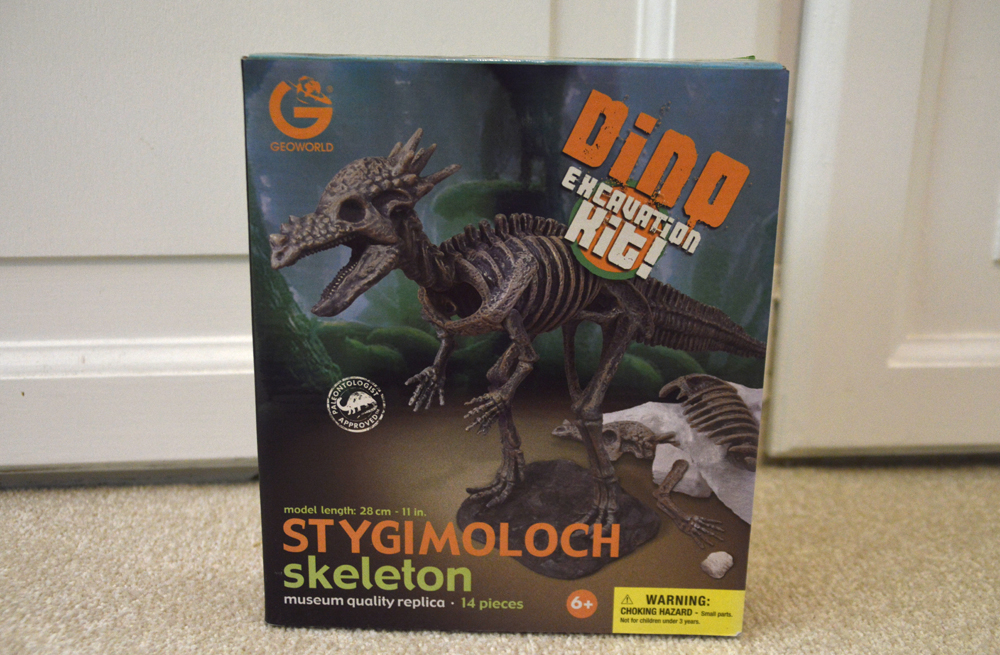
Now, paleontologist Jack Horner is famous for coming up with unorthodox ideas such as Tyrannosaurus being a pure scavenger. Once that argument was thoroughly debunked by basically everyone else, he then turned his attention to marginocephalian ontogeny, arguing that Torosaurus was a mature form of Triceratops and that Stygimoloch, a 3-metre/9-foot long pachycephalosaur from Montana’s famous Hell Creek Formation, was a juvenile form of Pachycephalosaurus. Whatever your views on this subject may be, for the sake of simplicity, I will refer to Stygimoloch as its own genus.
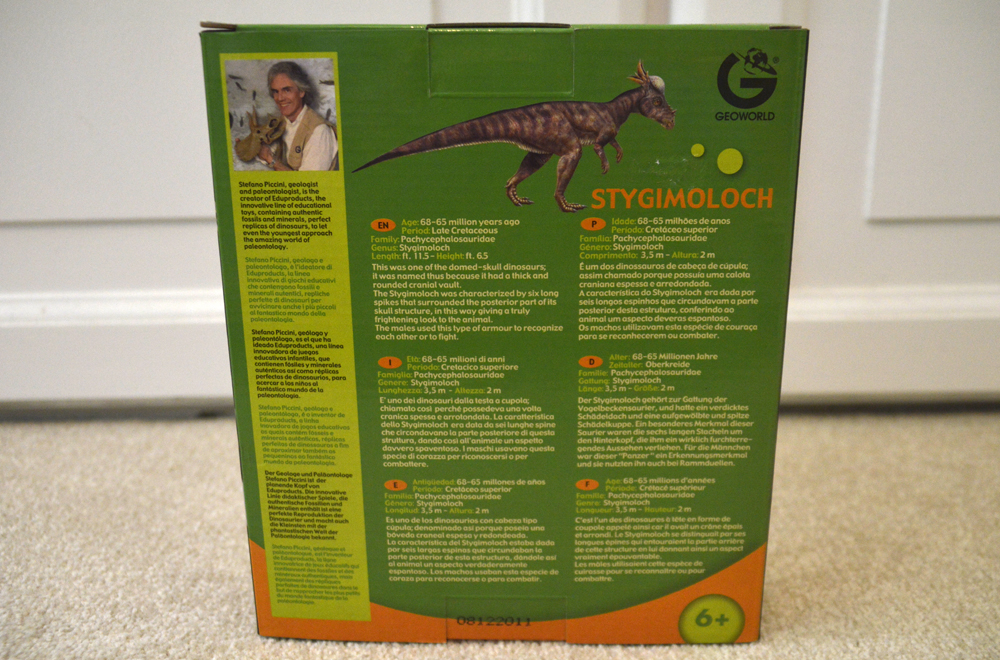
The back of the box contains information about Stefano Piccini, about whom I know nothing, and some factoids about Stygimoloch written in English and a few other languages. I have heard that Geoworld has a slight tendency to plagiarise artwork from other sources, although I do not know where this particular illustration came from.

The box opens up, book-style, to reveal a cellophane sheet showing the matrix, hammer and chisel, and instructions about how to assemble the model. (I deliberately blurred the children’s faces out of respect.) The box claims there are 14 pieces, but this is misleading – only 13 pieces make up the actual skeleton, along with a base and two random bits of plastic containing the product number and manufacturing date (2011-12-20).

Unlike the plaster blocks of my childhood, Geoworld’s ‘Excavation Kits!’ are made of chalk, and are thus considerably easier to dig into. However, soaking the block in water – a trick also useful with traditional plaster blocks – will soften it considerably. Within just a few minutes of opening, I found my first ‘fossil’, which turned out to be one of two hipbones. In all, it probably took my adult self about three quarters of an hour to extract all the pieces.
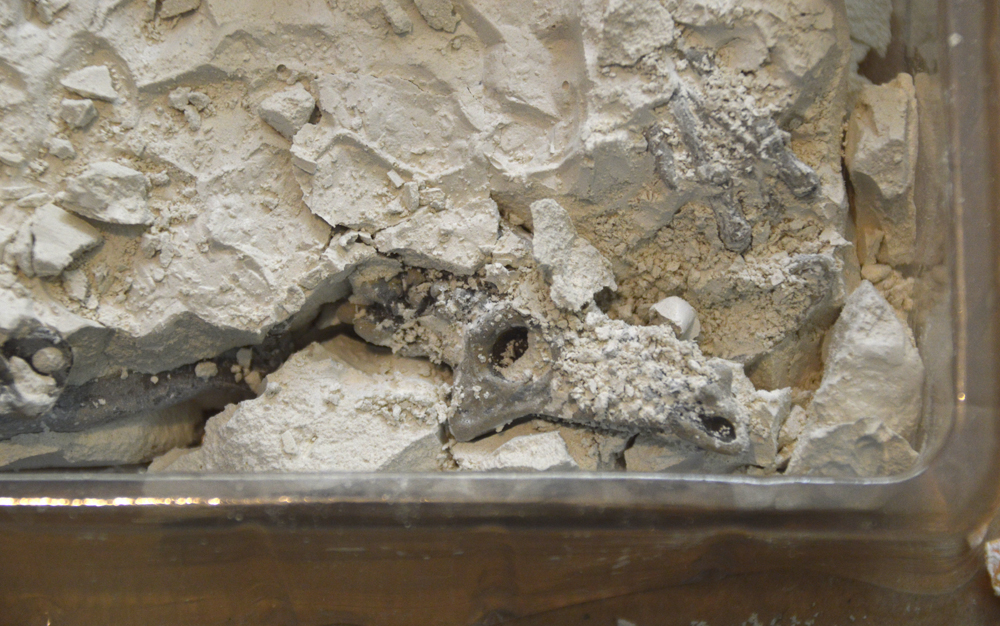
In order of assembly, the 13 skeletal pieces are the tail, vertebrae, two sets of ribs and scapulae (shoulder blades), the aforementioned hipbones, the limbs, the jaw, and two separate skull pieces. Far from the monochrome skeletons of childhood, the fossils here are look quite authentically coloured in various shades of earthen browns, along with occasional white stains from the chalk. Each foot has a peg that allows the skeleton to stand freely on its base, a simple, grey-brown affair with a slight rocky texture.


The finished model measures about 26 cm/10.5 inches and just under 14 cm/5.5 inches tall at the spikes. It might be a tiny bit longer, though, because when excavating, I accidentally snapped off the very end of the tail. Unfortunately, this was not the last time misfortune would befall the model, because during assembly, I also accidentally snapped the right ischium in two. The head is attached by a slightly-too-loose ball joint, but the other articulation points – the jaw and especially the limbs – are so stiff as to basically not be articulated at all.
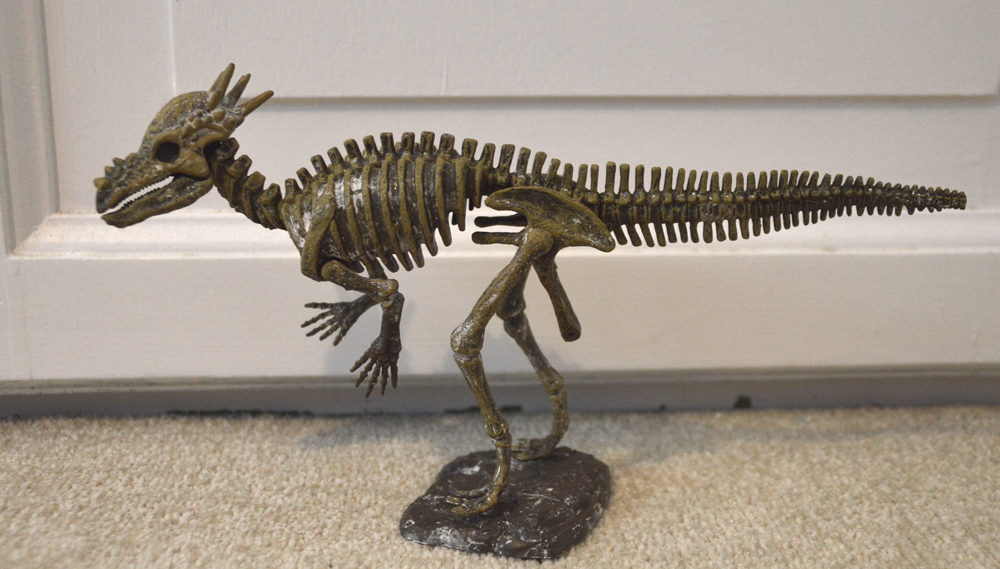

Thankfully, unlike the other Geoworld skeletal kits, the hands of this Stygimoloch are not pronated. They each have five fingers, which is accurate, although the lengths of the individual digits are off, being all approximately the same length. Each foot has four toes, including a hallux that is well clear of the ground, while each skull-half has four large spikes that give the ‘demon from Styx’ its name. They, unfortunately, are too straight and too uniform in length to match the skeletal, and while I know very little about pachycephalosaur anatomy and could very well be wrong, I cannot help but feel that the ribcage is a bit wide. The tail is also too thick and lacks the ossified tentons that would’ve held it stiff in life.
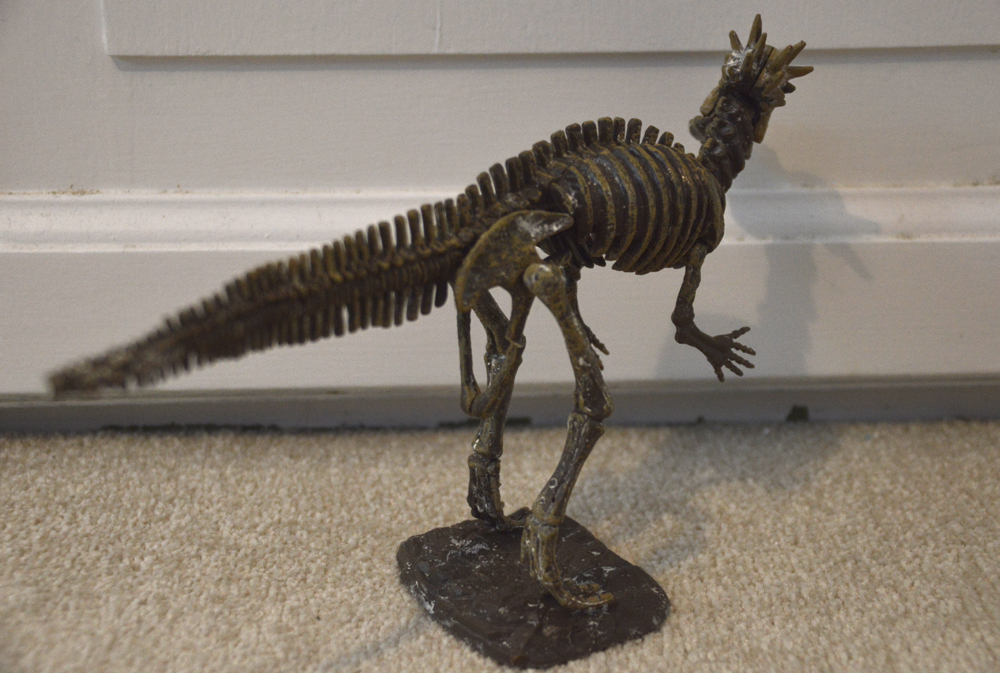
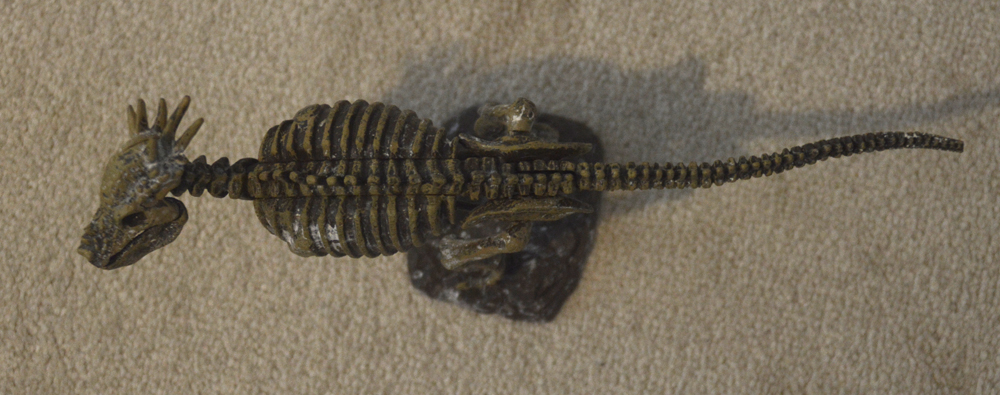
Despite its flaws, I quite like this model. It’s an unusual taxon that I haven’t seen in toy form very often (especially without a certain film brand attached to it), one that I was not expecting in an excavation kit, and I like the texture of the paintwork. While the box says it’s suitable for children aged 6+, I personally think that it would be better appreciated by slightly older kids, about 10+, due to the model’s fragility (which, alas, means that my mum’s friend’s son won’t be getting one just yet, as he’s only coming up seven). Geoworld has a surprising number of different prehistoric animals available in these kits, from staples as Tyrannosaurusto more unusual creatures like Mosasaurus, Parasaurolophus, Glyptodon, and even Homo neanderthalensis, and most of these, like my Stygimoloch, are available on Amazon and likely elsewhere.
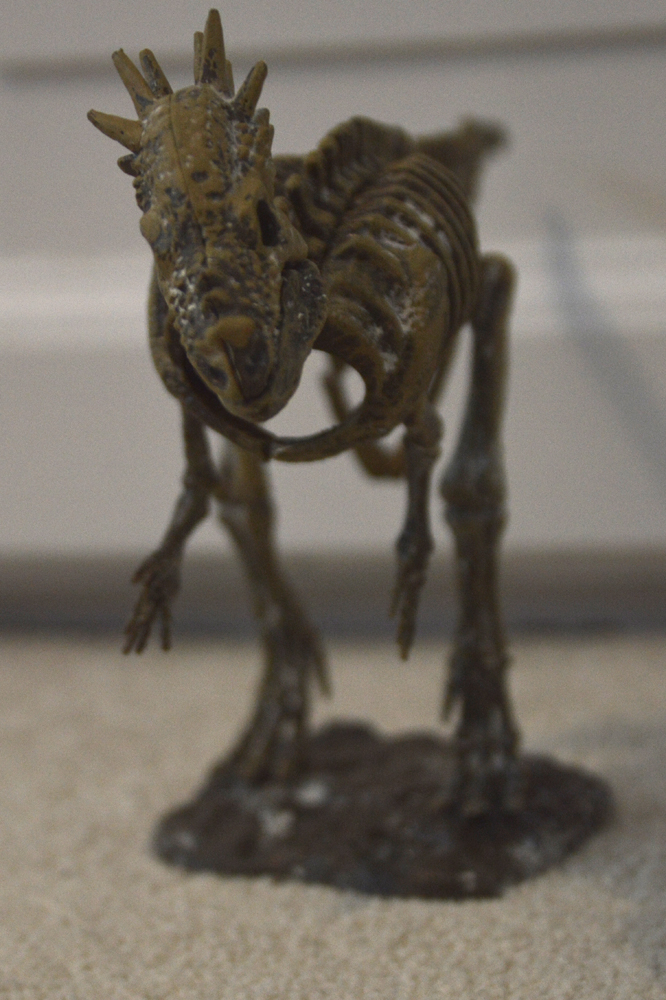
Support the Dinosaur Toy Blog by making dino-purchases through these links to Ebay and Amazon. Disclaimer: links to Ebay.com and Amazon.com on the The Dinosaur Toy Blog are often affiliate links, when you make purchases through these links we may make a commission
